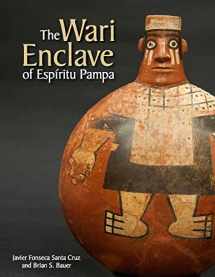
The Wari Enclave of Espiritu Pampa (Monumenta Archaeologica) (Monumenta Archaeologica, 44)
Book details
Summary
Description
The Wari State was the first expansionistic power to develop in the Andean highlands. Emerging in the area of modern Ayacucho (Peru) around AD 650, the Wari expanded to control much of the central Andes by the time of their collapse at AD 1000. This book describes the discovery and excavation (2010-2012) of a major new Wari site (Espiritu Pampa), located in the subtropical region of Vilcabamba (Department of Cuzco). While it was long believed that the Wari established trade networks between their highland capital and the Amazonian lowlands, the identification of a large Wari site in the Vilcabamba region came as a surprise to most Wari specialists. This book covers the first three years of excavations at the Wari site of Espiritu Pampa. It describes the identification of a central plaza surrounded by a series of D-shaped structures, that are believed to the loci of special activates for the Wari. It also describes the contents of more than 30 burials, many of which contained finely crafted silver, gold, bronze and ceramic objects.


We would LOVE it if you could help us and other readers by reviewing the book
Book review



